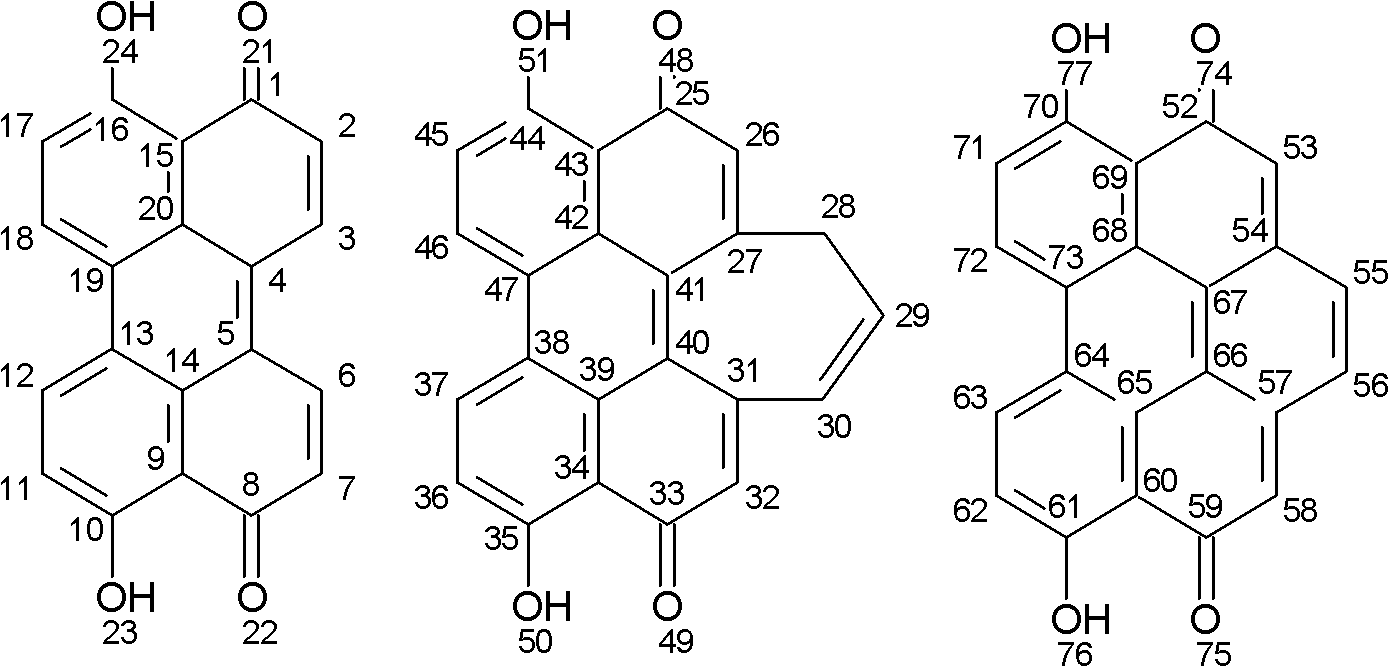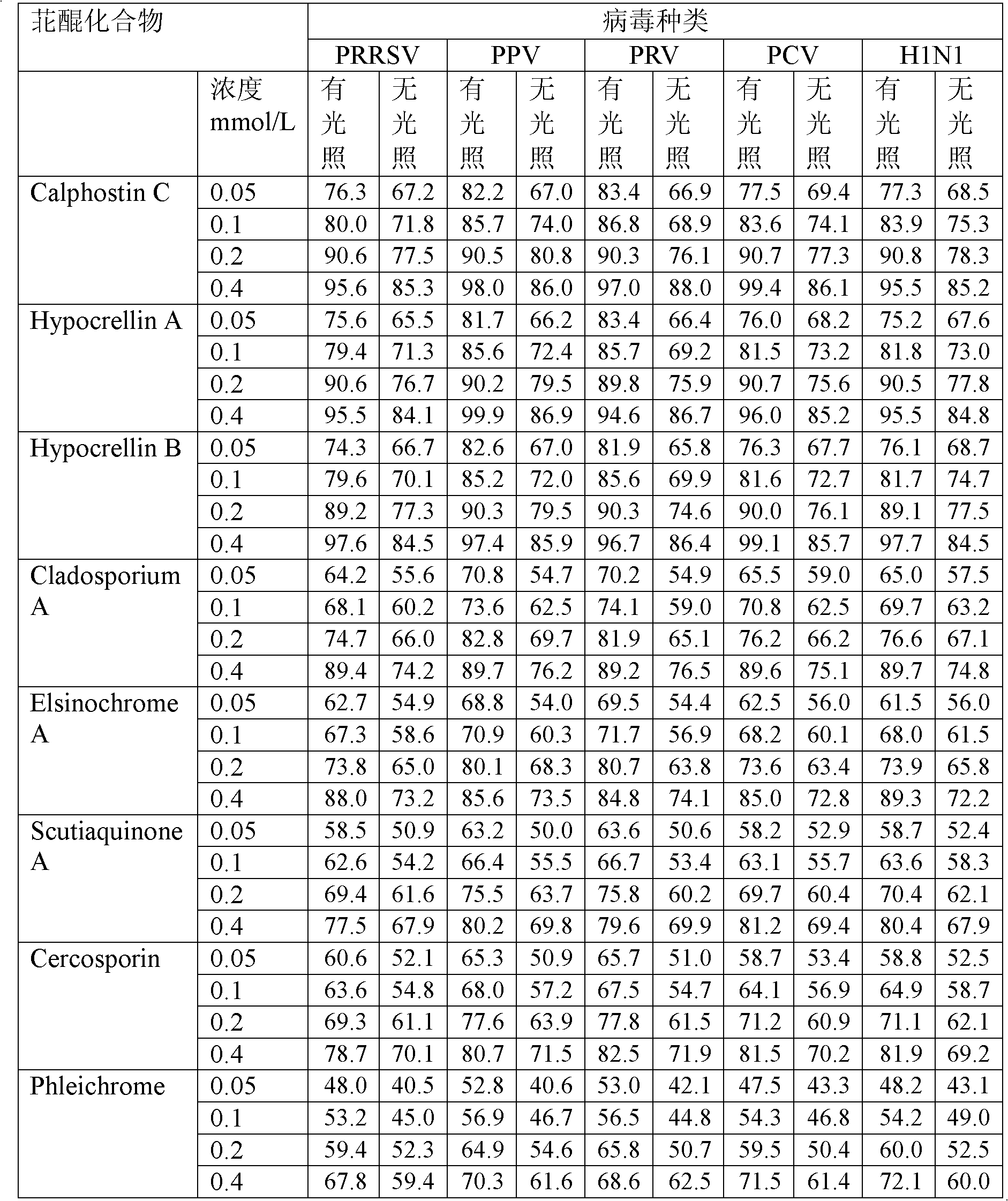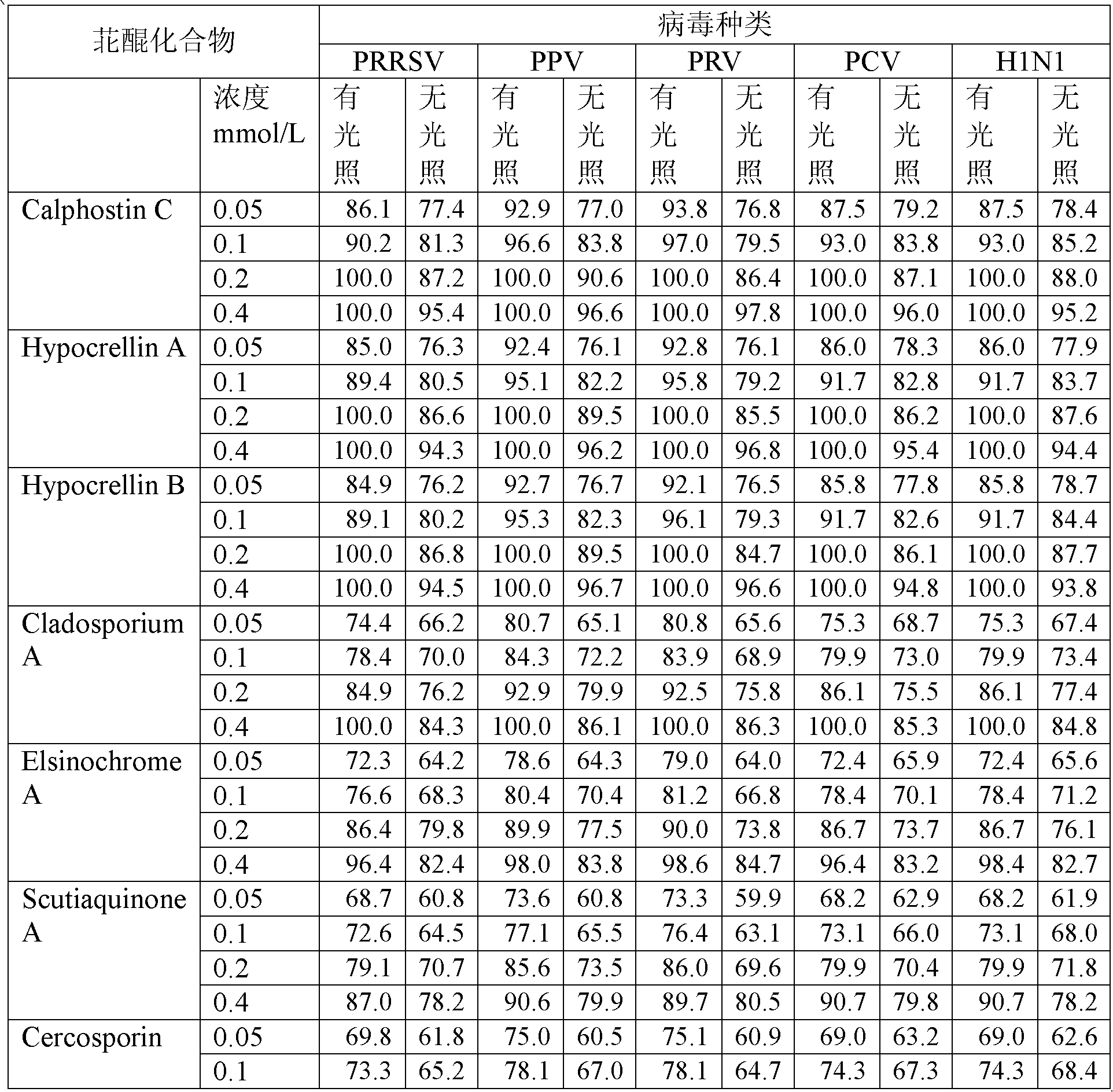Application of perylenequinone compound in preparation of feed for preventing and treating porcine viruses
A compound and pig feed technology, applied in animal feed, animal feed, applications, etc., can solve problems such as easy decomposition, hypericin cannot be effectively used, and hypericin’s chemical properties are unstable
- Summary
- Abstract
- Description
- Claims
- Application Information
AI Technical Summary
Problems solved by technology
Method used
Image
Examples
Embodiment 1
[0043] Example 1: In vitro antiviral experiment of perylenequinone compounds
[0044] (1) Preparation of cells for in vitro antiviral experiments
[0045] The effects of perylenequinone compounds on highly pathogenic porcine reproductive and respiratory syndrome virus (PRRSV) were studied with Marc-145 cells (monkey kidney cells). Growth medium: DMEM (Dulbecco's modified eagle medium, containing 4500mg / L D-glucose, 300mg / L L-glutamine, 110mg / L sodium pyruvate, 5% fetal bovine serum, 1% penicillin, 1% streptavidin white). After digesting Marc-145 cells with 0.25% trypsin, the cells were dispersed by pipetting, and diluted to 1×10 with DMEM growth medium. 6 Cells / mL, add to 96-well cell culture plate, 37°C, 5% CO 2 Cultured in an incubator, after the cells grew into a single layer of cells, the in vitro antiviral test was carried out.
[0046] The effects of perylenequinone compounds on porcine parvovirus (PPV), porcine pseudorabies virus (PRV) and porcine circovirus (PCV) w...
Embodiment 2
[0074] Example 2: Anti-PRRSV virus experiment of solid-state fermented hypocrellin added to feed
[0075] The basic dietary formula of pigs in the experiment is: corn 65%, soybean meal 12%, secondary meal 15%, rapeseed cake 3%, fish meal 1.8%, NaCl 0.3%, CaCO 3 0.8%, CaHPO 4 0.8%, lysine 0.3%, multidimensional 1% (can provide vitamin A 1200IU per kg feed, vitamin D 32500IU, vitamin E 30IU, vitamin K 3mg, vitamin B 18μg, riboflavin 4mg, niacin 40mg, Pantothenic acid 15mg, choline chloride 400mg. Folic acid 700g, thiamine VB 1.5mg, vitamin B 3mg, biotin 100g, Zn 80mg, Mn 20mg, Fe 83mg, Cu 25mg). The basic diet is powder, and corn and soybean meal are all crushed with 1.8mm sieves.
[0076] Hypocretin is produced by solid-state fermentation, corn is the main raw material, and 2% glucose and 0.2% KH based on the weight of corn are added 2 PO 4 , 0.04% MgSO 4 ·7H 2 O. Add water and mix the material to make it wet, control the ratio of material to water at 1:0.7, sterilize at...
Embodiment 3
[0088] Example 3: Anti-PCV virus experiment of liquid fermented hypocrellin added to feed
[0089] The experimental basal diet was the same as in Example 2.
[0090] Hypocretin is produced by liquid fermentation method, and the culture medium per liter consists of: glucose 20g, peptone 50g, potato 200g, (NH 4 ) 2 HPO 4 2g, KH 2 PO 4 2g, MgSO 4 0.5g / L, sterilized at 121°C for 20min, then add 10% liquid bamboo yellow fungus seeds after cooling. Both the initial pH and the pH of the fermentation process are natural, the fermentation temperature is 30° C., and the fermentation ends in 72 hours. The fermented liquid was removed by centrifugation to obtain mycelium, which was dried at 60°C. It was determined that hypocrellin A accounted for 8.1%, hypocrellin B accounted for 1.3%, and the total amount of other perylenequinone compounds accounted for 0.2%.
[0091] 40 piglets (average body weight 6.75kg) in good body condition after weaning at 25 days were divided into 4 groups...
PUM
 Login to View More
Login to View More Abstract
Description
Claims
Application Information
 Login to View More
Login to View More - R&D
- Intellectual Property
- Life Sciences
- Materials
- Tech Scout
- Unparalleled Data Quality
- Higher Quality Content
- 60% Fewer Hallucinations
Browse by: Latest US Patents, China's latest patents, Technical Efficacy Thesaurus, Application Domain, Technology Topic, Popular Technical Reports.
© 2025 PatSnap. All rights reserved.Legal|Privacy policy|Modern Slavery Act Transparency Statement|Sitemap|About US| Contact US: help@patsnap.com



